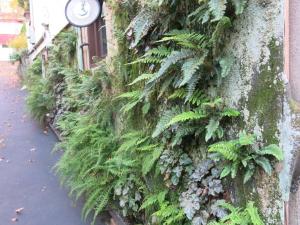“What day is it?” asked Pooh. “It’s today,” squeaked Piglet. “My favorite day,” said Pooh. – A.A. Milne
Thanksgiving has passed and has served us well. With so much conflict and concern about what is happening at home and globally, it gently brought our focus back to what matters most. Kindness, caring, celebrating life and togetherness, family and friends. Back to basics really. If we each should do our part in doing no harm, I am convinced the state of the world would instantly improve.
It has become so easy to get caught up with the social-media driven world. Between the Fear Of Missing Out (FOMO) and believing everything one reads without examination or thought, we have succumbed to thinking superficially and speaking in sound bites. Materialism often gains the upper-hand even as we struggle to simplify and live meaningfully.
Enter the power of nature. While we, as a society, embrace our on-line, e-world, we need to get out in the garden even more. By tending a garden, we are reminded to maintain our integrity and honest passion for the natural world. Gardeners remain at all times connected to the rhythms of nature and as a result, have a strong resistance to those not-always-helpful lures of the digital age.
In keeping with the spirit of the holiday season, we want to give attention to gifts of experience versus stuff. Memberships to museums and botanical gardens and/or conservancies, tickets to plays, concerts and other performances, trips to our National Parks and historical sites, or, making good on promises of breaking bread together. There is something for every budget and often, it can be the priceless gift of time – to take walks together, attend a community event, serve at a soup kitchen, share a meal at home, play board games, build something and, even plant a garden. Good for all ages and all personalities.
To get into the right spirit, I have the perfect activity. The Holiday Train Show at the New York Botanical Garden. Whether you are child or adult, it will delight and inspire. The buildings and other structures made entirely of natural materials are positively awe inspiring. The level of creativity and skill is mighty impressive. Not to be outdone, the plantings around the buildings are just as thoughtful and brilliant. Most of all, it is pure fun.
I have been going to this show from the very first year. It never fails to cheer me. I get into the holiday mood by going to the members preview which is held the Friday before Thanksgiving. Perfect timing.
Get a group of the young and young at heart together and go!
Note: Another fabulous event to attend! The Annual Holiday Art and Book Sale starts Dec 6 at the New York Art Students League. Yes, my work is represented! Please do go – support artists and art. Good place to start or add to an art collection.
Enjoy the photos from my visit to this year’s NYBG Train Show:
(c) 2016 Shobha Vanchiswar
[do_widget “Blog Subscriptions (Jetpack)”]










































































